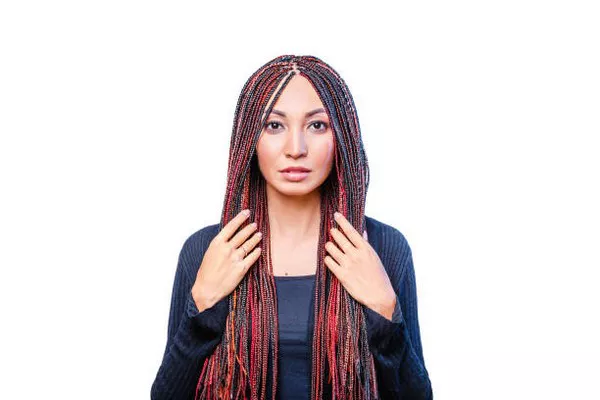Marley twists have become a popular hairstyle in recent years due to their versatility and low-maintenance nature. If you’re considering getting Marley twists or doing them yourself, it’s crucial to choose the right type of hair. This article will explore the different types of hair used for Marley twists, providing a detailed guide to help you make an informed choice.
Understanding Marley Twists
Before diving into the specifics of hair types, let’s briefly discuss Marley twists. Marley twists are a form of protective styling that involves twisting hair extensions into your natural hair. They are named after the Marley braid, which resembles the texture of Marley hair, a type of synthetic hair.
Types of Hair Used for Marley Twists
1. Marley Hair
Marley hair is specifically designed for Marley twists. It is a type of synthetic hair that mimics the natural texture of Afro-textured hair. Here’s what makes Marley hair a popular choice:
- Texture: Marley hair has a coarse, kinky texture that blends seamlessly with natural hair. It is ideal for achieving the authentic twist look.
- Durability: This type of hair is designed to be durable and long-lasting, making it a reliable option for twists that can last for weeks.
- Styling: Marley hair is versatile and can be easily styled into various shapes and sizes of twists.
2. Kanekalon Hair
Kanekalon hair is another popular choice for Marley twists. It is a synthetic fiber known for its softness and flexibility. Here’s why Kanekalon hair is used:
- Softness: Kanekalon hair has a soft texture that makes it comfortable to wear. It is less coarse compared to Marley hair, providing a different look.
- Flexibility: This hair type is flexible and can be easily twisted or braided. It is suitable for those who prefer a smoother twist.
- Heat Resistance: Some Kanekalon hair is heat-resistant, allowing for different styling options if desired.
3. Braid Hair
Braid hair, often used for traditional braids and twists, can also be used for Marley twists. It is a versatile type of synthetic hair. Here’s what you need to know:
- Texture: Braid hair can vary in texture, but it is generally smooth and less coarse than Marley hair.
- Variety: This type of hair comes in various textures and lengths, giving you flexibility in your styling choices.
- Application: Braid hair is easy to apply and style, making it a convenient option for those new to doing their own twists.
4. Human Hair
While less common, human hair can be used for Marley twists. It offers several benefits:
- Natural Look: Human hair provides a natural appearance and feel, making it a good option for those seeking authenticity.
- Styling Options: With human hair, you have more flexibility in styling, as it can be treated and styled just like natural hair.
- Longevity: Human hair can last longer than synthetic options if properly maintained.
Factors to Consider When Choosing Hair for Marley Twists
1. Texture Match
Matching the texture of the hair to your natural hair is essential for a seamless blend. Marley hair and Kanekalon hair both offer good texture matches for natural hair, but consider your preference for coarseness or smoothness.
2. Durability
Consider how long you want your Marley twists to last. Marley hair is known for its durability, but if you prefer a softer feel or plan on shorter wear, Kanekalon or braid hair might be more suitable.
3. Budget
Synthetic hair is generally more affordable than human hair. Marley hair, Kanekalon hair, and braid hair are budget-friendly options compared to human hair, which can be more expensive.
4. Maintenance
Different types of hair require different levels of maintenance. Marley hair may need regular moisturizing to maintain its look, while Kanekalon hair is low-maintenance and easier to care for.
See Also: How To Do A Round Braid With Paracord
How to Prepare for Marley Twists
1. Choosing the Right Hair
Select the type of hair that best suits your needs based on texture, durability, and budget. Ensure you have enough hair for the desired thickness and length of your twists.
2. Preparing Your Natural Hair
Before installing Marley twists, ensure your natural hair is clean and well-moisturized. Detangle and section your hair to make the twisting process easier.
3. Installing Marley Twists
Whether you’re doing it yourself or visiting a stylist, follow these steps:
- Section Your Hair: Divide your natural hair into small sections.
- Install the Hair: Attach the hair extensions to your natural hair using the twisting method.
- Twist: Twist the hair extensions around your natural hair, making sure the twists are uniform and secure.
4. Maintaining Your Marley Twists
Once your Marley twists are installed, keep them looking fresh by:
- Moisturizing: Apply a light leave-in conditioner or oil to keep the twists hydrated.
- Covering: Wear a satin or silk scarf at night to prevent frizz and breakage.
- Cleaning: Clean your scalp regularly with a gentle cleanser to keep it healthy.
Conclusion
Choosing the right type of hair for Marley twists is crucial for achieving the best look and ensuring the longevity of your hairstyle. Marley hair is the traditional choice, offering authenticity and durability, while Kanekalon and braid hair provide different textures and styling options. Human hair is an alternative for those seeking a more natural look and feel. Consider your personal preferences, budget, and maintenance needs when selecting the hair for your Marley twists. With the right choice, you can enjoy a stylish and low-maintenance look that enhances your natural beauty.


